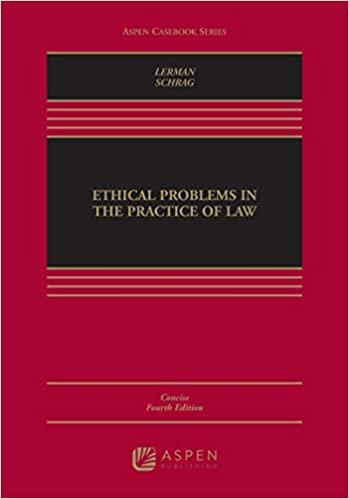Question
case study 1; hen you bump one end of a bar, you only locally deform that end and the rest of the bar is unaffected
case study 1;
hen you bump one end of a bar, you only locally deform that end and the rest of the bar is unaffected at first. But by inwardly deforming the near end of the bar, you have created a region of high pressure in the bar surrounded by regions of lower pressure. Said another way, you have forced the atoms in the near end of the bar to get closer to each other than the equilibrium positions of their chemical bonds. Said more simply, you have knocked the first few layers of atoms against the next few layers of atoms. What happens next?
case study 2;The near end of the bar which is at a higher pressure pushes on a lower pressure part of the bar a little farther down the bar, causing it to have a high pressure. This process continues and you end up with a pressure wave going down the length of the bar until it finally reaches the far end. We commonly call such a pressure wave by the name "sound". You therefore literally create sound wave that ripples down the bar when you bump one end. It is not a continuous sound wave like a flute's tone, but it's a sound wave nonetheless. The far end of the bar does not move until the sound wave has had time to reach it and cause it to move. Because the "message" that the bar was bumped is carried to the entire bar by a sound wave, such a setup could only be used to send messages at the speed of sound. The speed of sound is much slower than the speed of light, and is definitely not instantaneous. What exactly is this pressure wave? It is a domino effect of chemical bonds between atoms being compressed, springing back towards equilibrium position, and yanking their neighbors upon springing back. In the simplest picture, the first layer of atoms knocks into the next layer of atoms and gets it moving, which then knocks into the subsequent layer, and so on.
quetsions
1.time to time there occur error in the managerial accounting work; thus need arise whether to investigate or not to investigate ; explain nth relevance of the Random factors that need to captured in to investigate such
2.from the above question; explain how theOut of date standards criteria can serve the same purpose in managerial accounting
3.what sense is derived by the Changes in the cost structure criticismin managerial accounting changing diversities ?
4.how does Delayed feedback reporting have an effect on thesystem instantaneously operations for thelengthy time lag in managerial accounting?
5.whjy should you keep in mind the concept of materialityfor variations in investigation of the managerial accounting frauds?
6.what are the possible trends that go hand in hand with the acceptable control limits in managerial accounting?
7.explainn the controllability measure of the managerial accounting relevance in the division of the uncontrollablevariances
8.explain the Management signals that govern the managerial accounting frameworks
9.how can an individual isolation of variance in managerial accounting have an impact on the successive periods if their full significance?
10.explain some of thesignals that may be extracted from variance trend information in managerial accounting
Step by Step Solution
There are 3 Steps involved in it
Step: 1

Get Instant Access to Expert-Tailored Solutions
See step-by-step solutions with expert insights and AI powered tools for academic success
Step: 2

Step: 3

Ace Your Homework with AI
Get the answers you need in no time with our AI-driven, step-by-step assistance
Get Started


